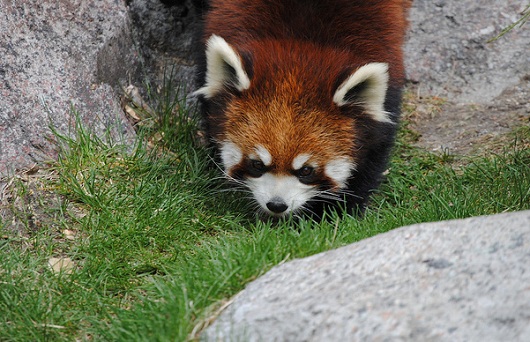New conservation facilities breaking ground in Front Royal
 Red panda are just one of several rare species living at the Front Royal conservation site. (DragonKitty2010)
Red panda are just one of several rare species living at the Front Royal conservation site. (DragonKitty2010)
Earlier this summer, George Mason University in conjunction with the Smithsonian Conservation Biology Institute, began construction of new facilities in Front Royal, VA. The construction project is the latest development in a partnership aimed at training the next conservation leaders.
Steve Monfort, Director of the Smithsonian Conservation Biology Institute, spoke about the origins of the Smithsonian Mason Conservation Institute at the ground-breaking event.
“This partnership started with a small group of likeminded individuals that had a simple idea: How to join two of the world’s great knowledge institutions together with the common goal of educating and training the next generation of students, scientists, conservation leaders and practitioners from around the word.”
This latest project will create new residence and dining halls, as well as an Academic Center equipped with teaching laboratories, classrooms and office space.
Alonso Aguirre, Executive Director of the Smithsonian-Mason Global Conservation Studies Program, spoke about the present and future of the program. Aguirre acts as a liaison between the university and the Smithsonian Institution, working as a full-time employee of the university at the facilities in Front Royal.
“There will be 16 students in the program this fall,” Aguirre said. “The plan is to eventually accept as many as 120 students each fall.”
Currently, the program runs from August till December and offers seven distinct, integrative courses. Aguirre said he also expects the number of courses to expand to at least 20 in the coming years.
One example course offering is Conservation Conflict Resolution. According to Aguirre, students in the course look at conservations issue related to specific species and find ways to look at the root cause of the problems.
A number of rare animal species currently reside at the facilities in Front Royal. These species include red pandas, clouded leopards, and wild horses.
For more information about the program, students can visit the Mason Center for Conservation studies website: http://mccs.gmu.edu/
The Conservation Program is just one of several projects pairing George Mason with the Smithsonian Institution.
Last October, George Mason University’s College of Humanities and Social Sciences announced it was collaborating with The Smithsonian Associates to offer a new Master of Arts degree in the History of Decorative Arts.
Brian Selinsky, Director of Information Technology at the Registrar’s Office, has since confirmed the new art degree program is active and classes for the program will begin this fall.
